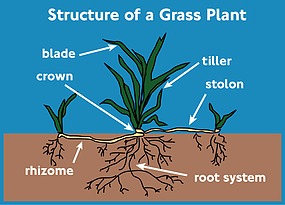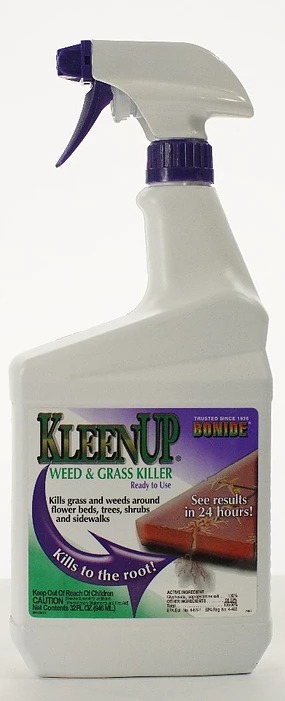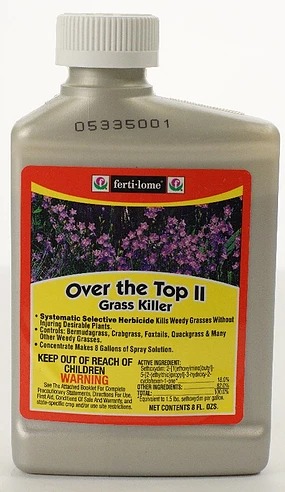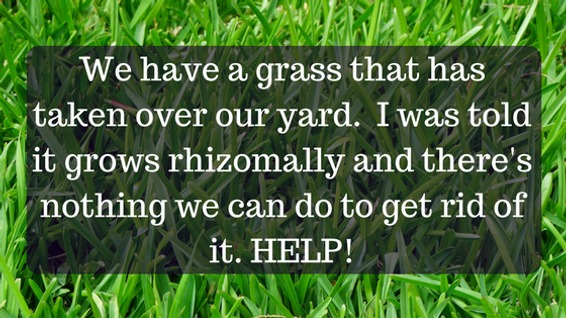Well, we have good news and bad news. The good news is that it’s not impossible to get rid of weed grasses, even if they spread by rhizomes. The bad news is that it can be difficult, depending on a few different factors.
First, a little background on grasses. Grass grows in one of three different growth habits – rhizomatous, stoloniferous and bunching.

Rhizomatous
Rhizomatous grasses spread by rhizomes, tiny stems that grow underground. They spread out from the base of the plant, and where the rhizome ends a new tuft of grass pops out.
Stoloniferous
Stoloniferous grasses spread by stolons. Stolons are very similar to rhizomes, except they creep along the ground instead of growing underneath. New tufts of grass can pop up along the whole length of the stolon.
Bunching
These grasses form clumps of grass that grow upward from the crown. They don’t spread by either stolons or rhizomes. Of the three, bunch type grasses, like tall fescue or perennial ryegrass, are usually easiest to eliminate. As long as you remove the roots and crown, you’ll stop the grass from coming back. Grasses that spread by rhizomes or stolons can be more difficult to eradicate. You’ll need to kill or remove all parts of the plant including the crown, roots, stolons and rhizomes to keep it from coming back. But there are some things you can do to keep these types of grass under control. How you go about it will depend a lot on where in your yard the grass has taken hold.

In Hardscapes
If the grass is popping up in rock, bark, around porches, it can be pretty easy to control. Here you can use a non-selective weed killer like Kleen-Up. This will kill anything green, so it’s perfect for areas you want to eliminate all vegetation. Kleen-up works systemically to kill the whole plant, roots, rhizomes and all.

In Flower Beds
If the grass is invading your flower bed, you can use a selective herbicide like Ortho’s Grass B Gon or Fertilome’s Over the Top. This will kill any type of grass, but wont’t harmbroad-leafed plants like annuals or perennials. These grass killers are effective, but they can take a while to work – usually about 3 applications will do the trick.
In the Lawn
This is the trickiest area to remove perennial weed grasses. The weed grass is so similar to the lawn grass that there’s nothing you can do to kill one but not the other. The best thing to do is keep a sharp eye and address the problem early. As soon as you see weed grass popping up in the lawn, kill off the weed grass with Kleen-Up or another non-selective grass killer. This will kill the weed down to the root, but unfortunately, it will also kill your lawn grass. You will need to re-seed the area when you’re done. If you jump on it early, you can control the small patches of weeds with limited damage to the lawn. It’s also important to keep up your lawn maintenance the same time. Keep the grass well watered, feed and trimmed. A healthy lawn will naturally start to out compete weeds of all kinds.

